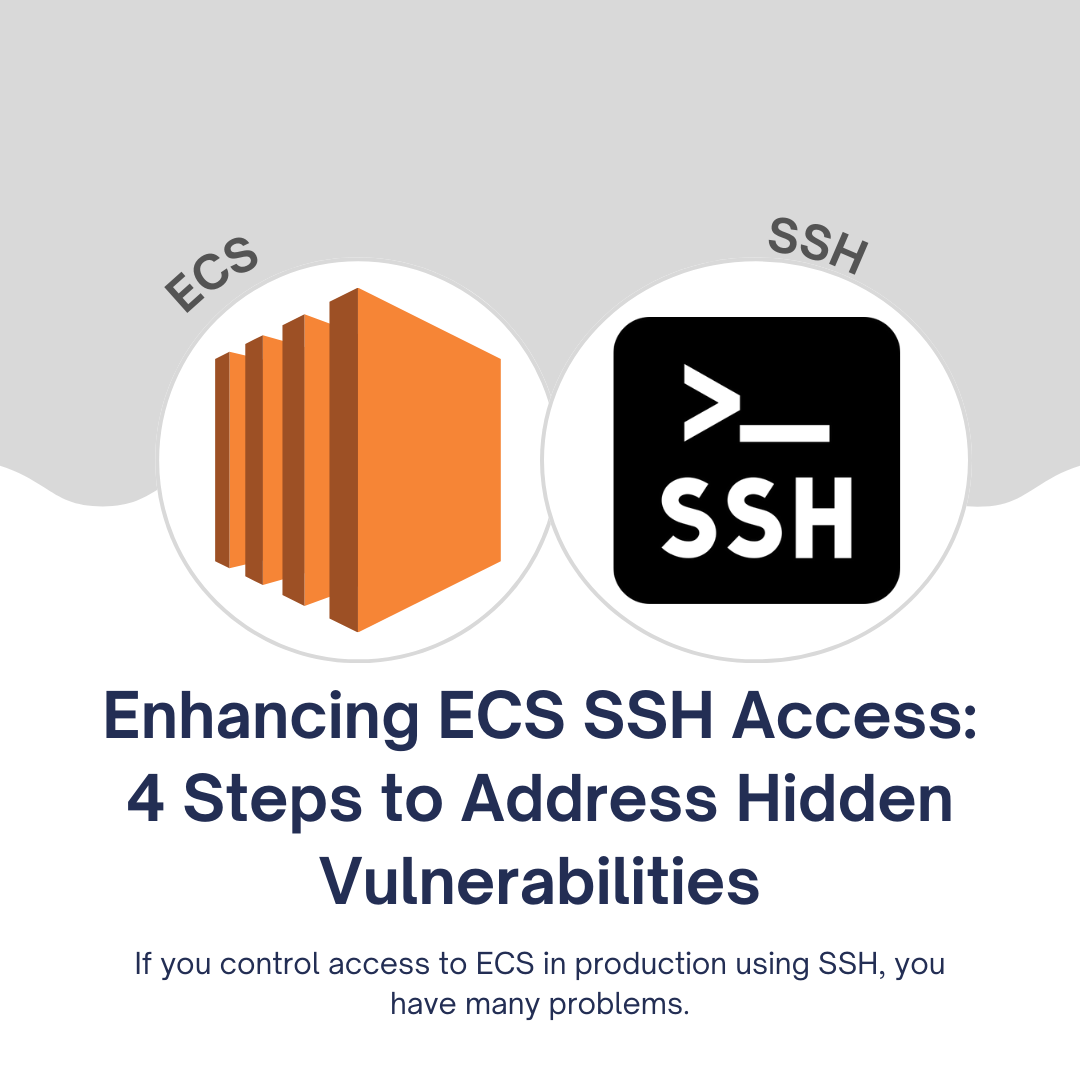Enhancing ECS SSH Access: 4 Steps to Address Hidden Vulnerabilities

When it comes to controlling access to Amazon Elastic Container Service (ECS) in a production environment, ensuring efficiency and security is paramount. However, many organizations face challenges in this area that often go unnoticed. In this article, we'll delve into the five major issues associated with ECS SSH access, explore their implications, and discuss practical strategies to mitigate their impact.
The Significance of Fast and Secure ECS Access
Fast and secure access to ECS by the right engineers is crucial for maintaining product speed. Tasks such as troubleshooting, bug fixes, and incident resolutions heavily rely on rapid data access. Regrettably, numerous teams resort to suboptimal solutions for granting access, which not only pose significant security risks but also lead to inefficient workflows.
Identifying Hidden Vulnerabilities
The vulnerabilities in your ECS access management may not be immediately apparent, but they represent substantial attack vectors that need addressing. These hidden vulnerabilities encompass:
1. Single Sign-on & Multi-Factor Authentication (MFA)
Implementing Single Sign-on (SSO) and MFA ensures robust user authentication, reducing the risk of unauthorized access to ECS.
2. Audit Trials and Personally Identifiable Information (PII) Protection
Audit trials are vital for tracking ECS access activities, and PII protection is essential for safeguarding sensitive data. Neglecting these aspects can result in compliance and security issues.
3. Compliance (GDPR, PCI, SOC2, and HIPAA)
Depending on your industry, compliance with regulations like GDPR, PCI, SOC2, or HIPAA may be mandatory. Non-compliance can lead to severe consequences.
4. Developer Experience
A positive developer experience is essential for streamlined workflows. Cumbersome access processes can hamper productivity.
Addressing the Vulnerabilities: 4 Key Steps
To tackle these hidden vulnerabilities and optimize ECS SSH access, consider the following four steps:
Step 1: Gradual Integration of SSO and MFA
Rather than embarking on a complex SSO and MFA implementation project, start by integrating existing tools such as Google OAuth. This approach minimizes the need for new tools and accelerates the deployment of these essential security measures.
Step 2: Prioritize Features Based on Industry Needs
Tailor your ECS access features to align with your industry's requirements. Focus on enhancing developer experience, SSO, and MFA if your organization operates in a less regulated environment. Conversely, prioritize audit trails and compliance features for highly regulated industries.
Step 3: Leverage Unified Solutions
Reduce complexity by consolidating your access management tools. Consider incorporating technologies like AWS/GCP, databases, Kubernetes, and servers into a single comprehensive tool. This approach simplifies administration and enhances overall user experience.
Step 4: Add Friction to Unwanted Access Methods
To discourage the use of less secure access methods, introduce friction to these processes. For example, if engineers are accessing ECS via an insecure but fast method, you can require them to submit a form, making it less convenient. This encourages them to adopt more secure practices over time.
Conclusion
Addressing the hidden vulnerabilities associated with ECS SSH access is essential for ensuring both security and efficiency in your organization's operations. By following these four steps, you can gradually enhance your ECS access management, prioritize features according to your industry's needs, simplify your toolset, and promote secure access practices. Ultimately, these efforts will contribute to a more robust and streamlined ECS access system, benefiting your organization's productivity and security.
